Heading south on the road from Siena to Grosseto last year, Sue snapped this photograph from our car as we sat in traffic, waiting to join the cypress avenue queuing in line above us on the horizon. The trees were lying in wait, ready to ambush us at the next junction. A crest of spikes. But with a gentle zigzagging we joined together like the interlocking teeth of a zip fastener and cruised in harmony down to the ancient site of Roselle.
Northeast of Grosseto are the excavations of Roselle, which was one of the most important Etruscan cities in northern Etruria. Probably founded in the 7th century BC on the southeastern side of Lake Prile (now dry), it came under Roman dominion in 294 BC, and most of its major buildings were erected in the Imperial era. A bishopric was founded here in the Middle Ages, but in 935 it was pillaged by the Saracens, and abandoned after 1138 when it became a quarry for nearby villages.
The pretty drive up the hill of Poggio Moscona through a wood passes several tombs. A footpath to the right continues along a stretch of the impressive cyclopean walls (6th century BC), reaching 5m in height, which formed a ring over 3km long around the Etruscan town. The footpath leading uphill overlooks the Roman road (formed of large flagstones) and the area comprising the Roman forum and basilica. Nearby are remains of a house with mosaic floors, a paved street, and drains.
The amphitheatre, just 37m by 27m, has four entrances in ‘opus reticulatum’, built in the 1st century AD. On the adjacent hill traces of the earlier Etruscan settlement have been brought to light, together with remains of household objects, pottery, tiles and unbaked bricks. There is evidence from wells found here that the Etruscans used a system of collecting rain water similar to the Roman impluvium. The view over the plain (formerly Lake Prile) is particularly beautiful.
Alta Macadam: Blue Guide Tuscany
Entrance to the amphitheatre
La Basilica dei Bassi
This building is known as Bassi Basilica, but it might be possible that here was where the local senate met: the Curia Senatus, whose function was religious and political. This building has a wall of bricks, a semicircular apsis and lateral niches originally covered with marble slabs, as indicated by the clamps on the walls. The floor is also made of pink and grey marble. Within the room have been found statues from the 1st century AD, fallen from their original position when the building collapsed. Thus, the statues were separated from their respective inscriptions with the names of the people that they were representing. Probably the statues portrayed the members of the family who had funded the building.
The apsis contained the effigies of a sitting male with nude torso, whom the inscription identifies as Valerianus Frater, and another statue portraying a woman: Priscilla Soror. In a near recess there was another character wearing a mantle whose name was Bassus. To suggest the original position of the statues, in the room are exposed copies in marble made in 2009 (from the left: Bassus, Priscilla Soror, Valerianus Frater) among the statues that are now exhibited at the Archeological Museum of Grosseto.
Soprintendenza Archeologia della Toscana
There was much to explore, and the more we looked the more there was to see. Traces and echoes and ancient footprints. The midday sun was hot and there was little shade. Probably any trees that dared to grow here were quickly removed lest their roots fracture these historic foundations. We moved on up the hill to where the trees had been allowed to remain. They too were like exhibits in a museum.
La cisterna di età romana sulla collina meridionale
On top of the Southern hill are preserved findings that demonstrate a stable settlement during the Etruscan Age, from the Late Archaic period to the Classic Age (end of the 6th and beginning of the 4th century BC) until the Hellenistic period (2nd century BC), while other Villanovian fragments show that the settlement is more ancient. During the Roman-Imperial period, on the Southern hill, there was built a big cistern consisting of a large rectangular room almost completely underground, subdivided by a support in two naves provided with an arch-shaped way, and a massive vault, now partly lost. To store the water efficiently, the bottom and the walls of the cistern are armoured with a waterproof liner of pinkish Opus Signium.
The Opus Signium, as explained by Vitruvius, was a building material particularly favoured by the Romans, named after the city of Segni; it is composed of fragments of crushed bricks and mortar of aerial lime. Not too far from the cistern, and probably connected with it, have been found remains of the round mouth of a well of one meter diameter, included in a square structure.
Soprintendenza Archeologia della Toscana
As we returned to the air-conditioned refuge of our hire car, a swallowtail butterfly alighted alongside to bid us farewell. We headed south and consulted the Blue Guide.
In the southeastern corner of Tuscany, the area around Pitigliano and Saturnia is of great natural beauty. The landscape is immensely varied: at times dramatic and austere, at others inviting and serene. Dense woods and coppices alternate with rolling hills and fertile valleys scattered with farmhouses. Characteristic are the ruined castles and hilltop villages, built out of the underlying rock or stone, many of them still enclosed in their medieval walls. Important Etruscan necropoleis have been found in the area (especially around Sovana and Saturnia), and excavations continue. The finds are exhibited in the local museums of Pitigliano, Manciano and Scansano. The area is known for its excellent wines (whites of Pitigliano and Sorano and the red Morellino di Scansano).
We came down to Saturnia, a spa since Roman times, where we were greeted by a nest of wasps, or maybe they were hornets, in the porous volcanic tufa.
…Saturnia is above all visited as a spa town, and the hot sulphurous water (37°C) of the Terme di Saturnia has been known since Roman times. The water is famous for its curative properties, though the spa is now part of a luxury-class hotel. Outside the spa town, however, at the Cascate del Gorello next to an old mill, the hot water falls in cascades over whitened rocks, creating natural (unenclosed) pools. Though this uniquely beautiful spot has suffered from neglect and the waters have been partially diverted in recent years, you can still have a warm swim here free of charge.
Alta Macadam: Blue Guide Tuscany
There was not a lot of swimming going on, just one man breaststroking while wearing a Panama hat. Mostly people were soaking and absorbing the communal spirit, some were meditating, a couple were necking, we were paddling and after a while we got used to the smell of bad eggs. We approached the cascades, but fully clothed and with a camera in hand this was as close as we got. Not very intrepid.
The view back down from the top of the field.
We’d been recommended to visit Saturnia by the painter, Will Smith. He sent us photos from when he was here in 2013. An intrepid photographer in the heart of the cascades!
Therme Saturnia
Saturnia Pool
※
See more paintings by Will Smith at The Rowley Gallery.


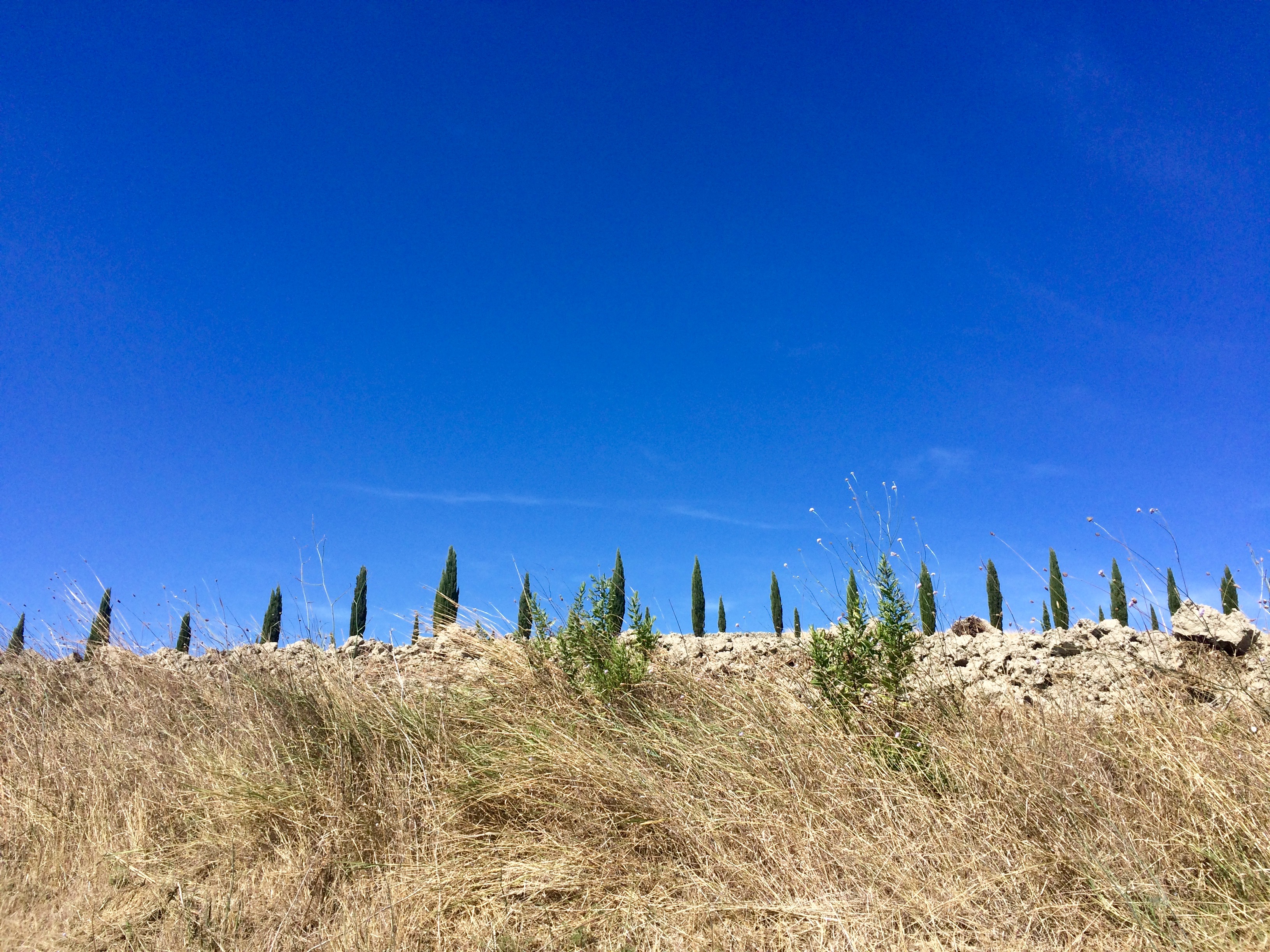








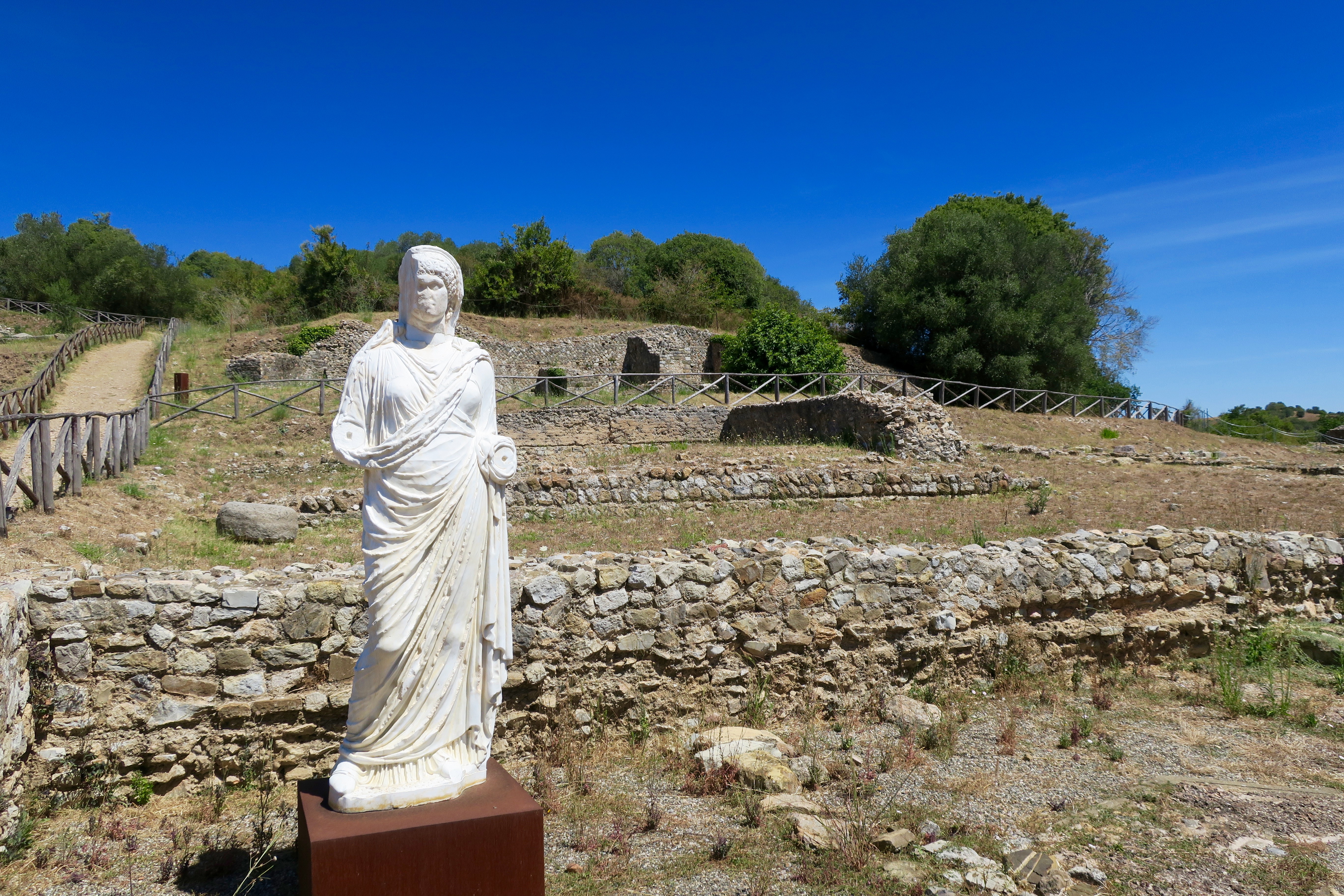





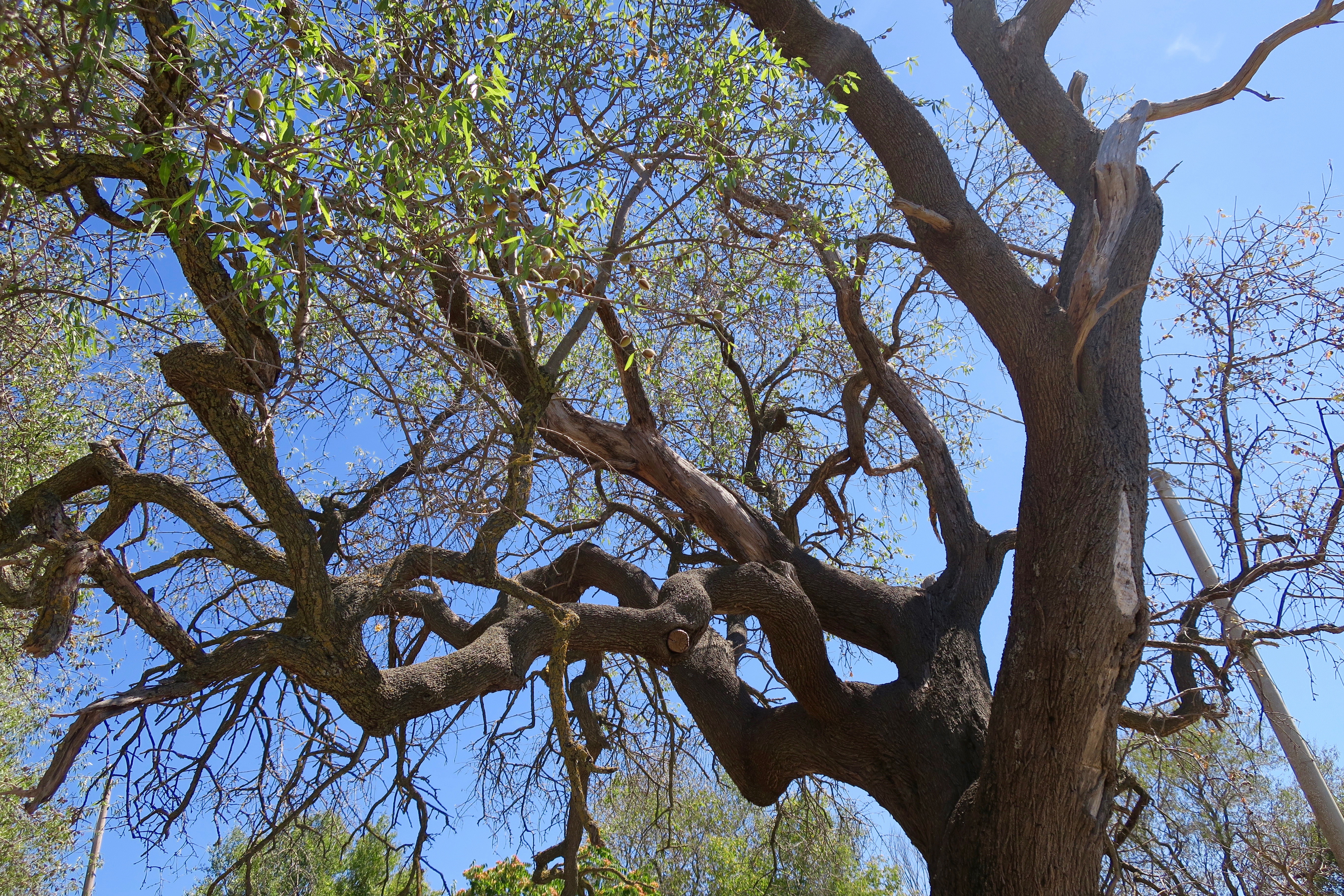




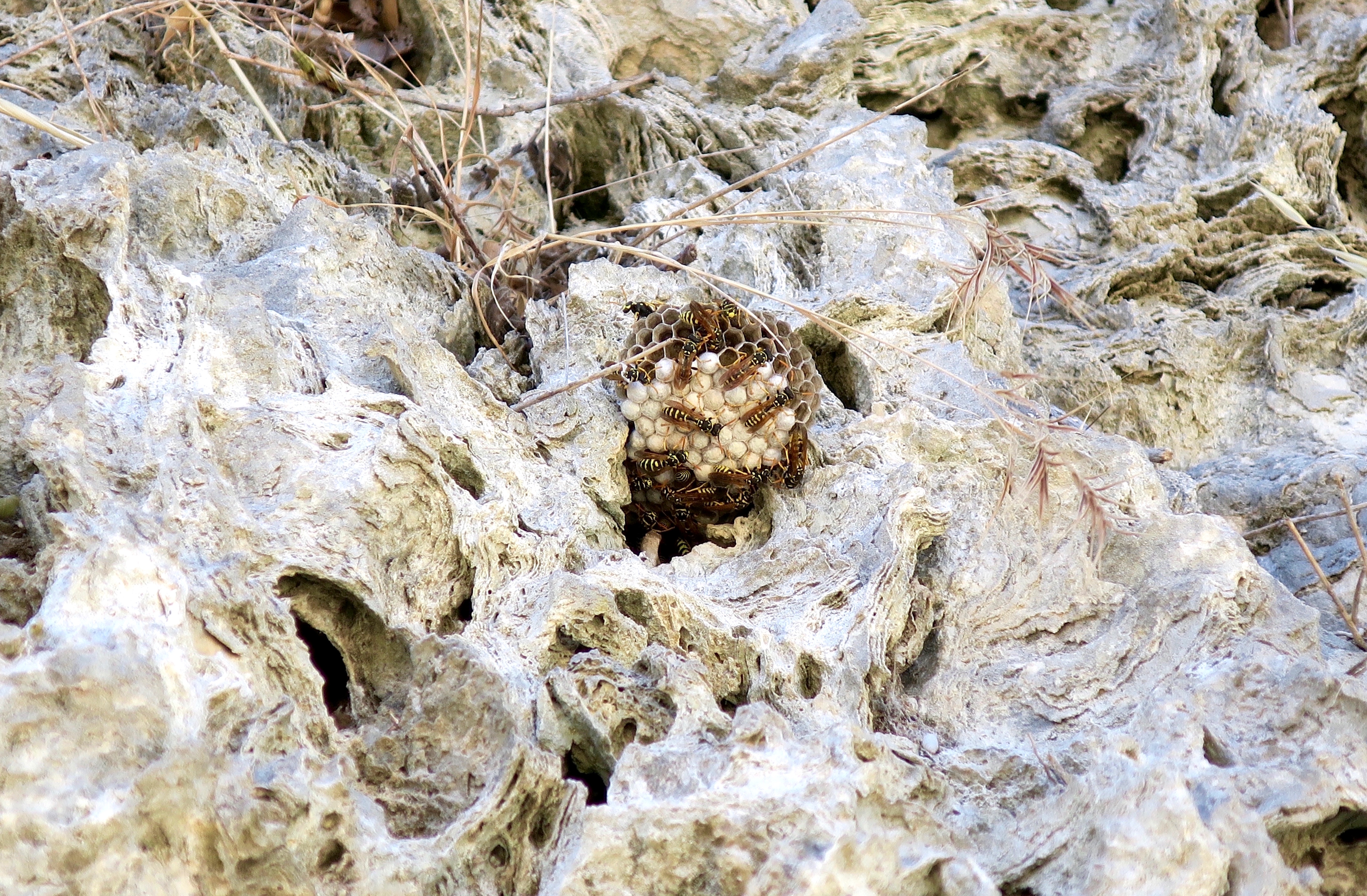
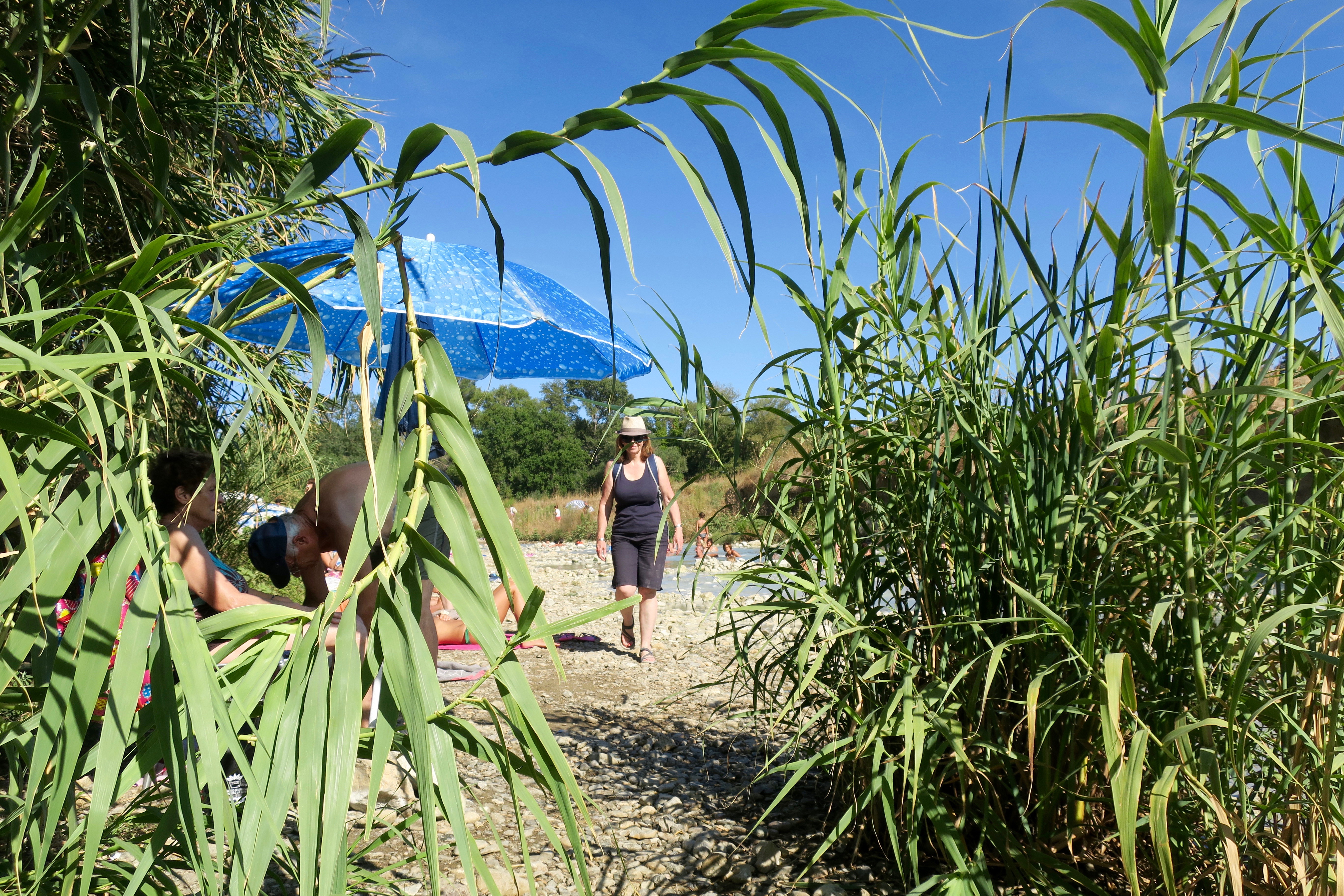

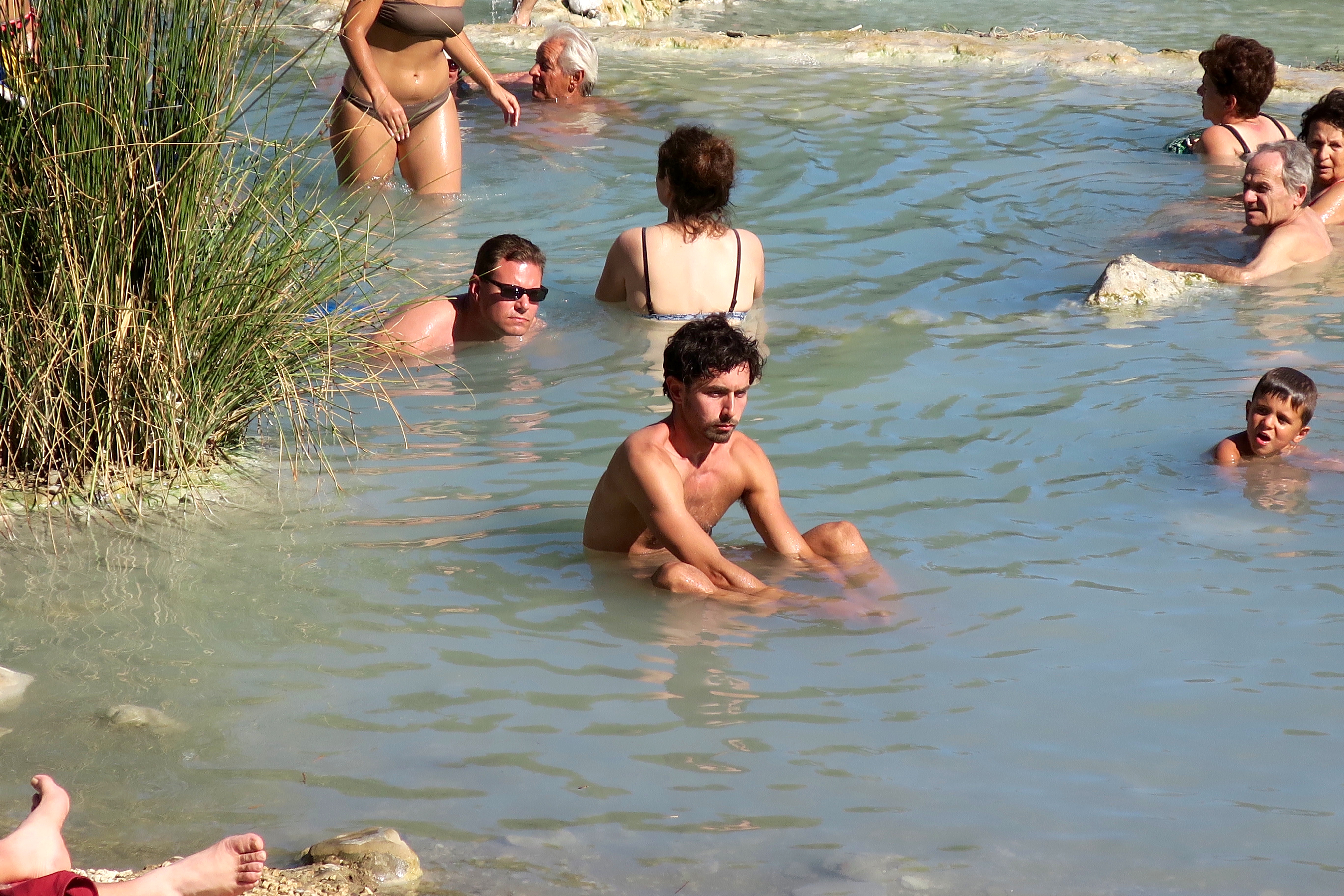



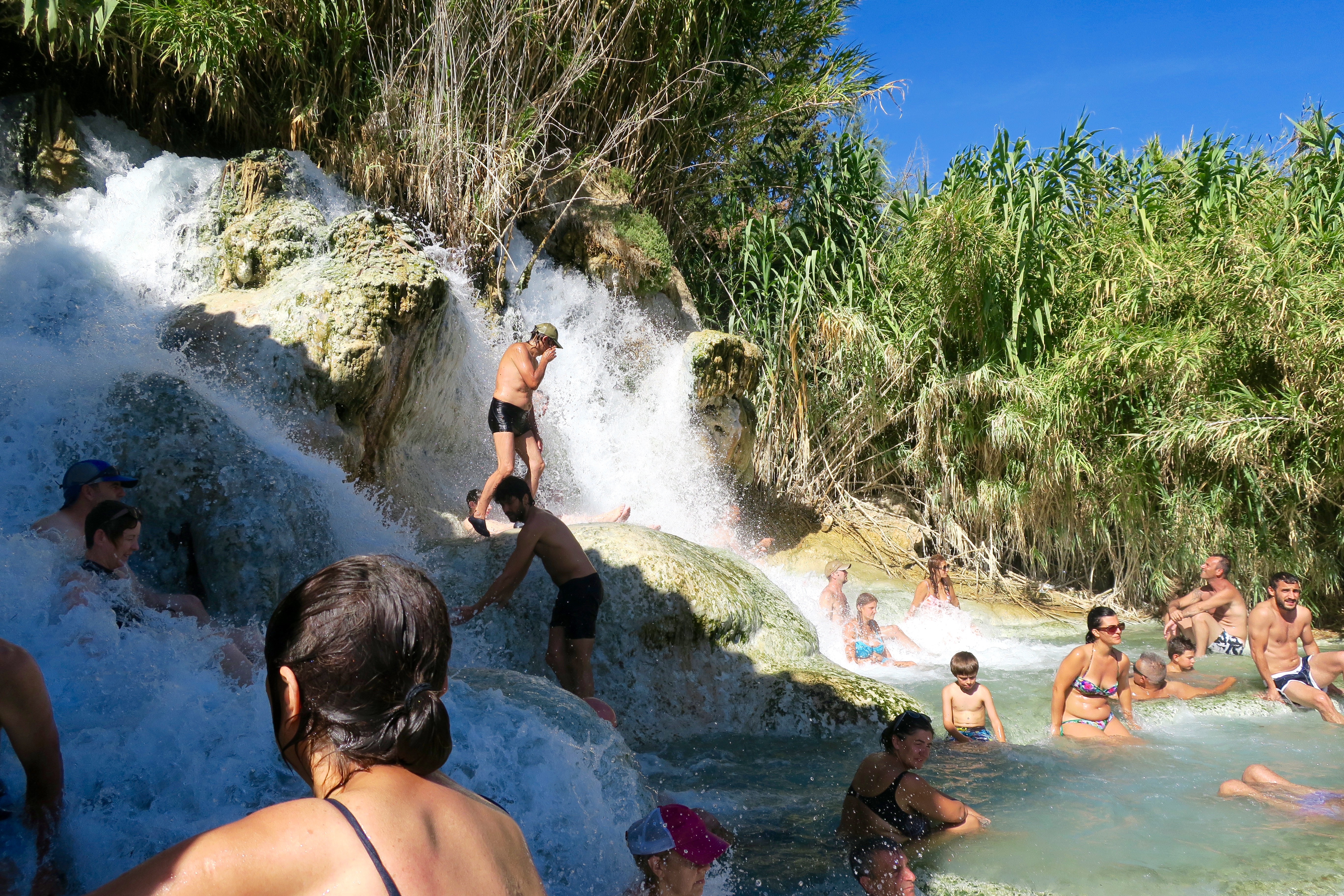


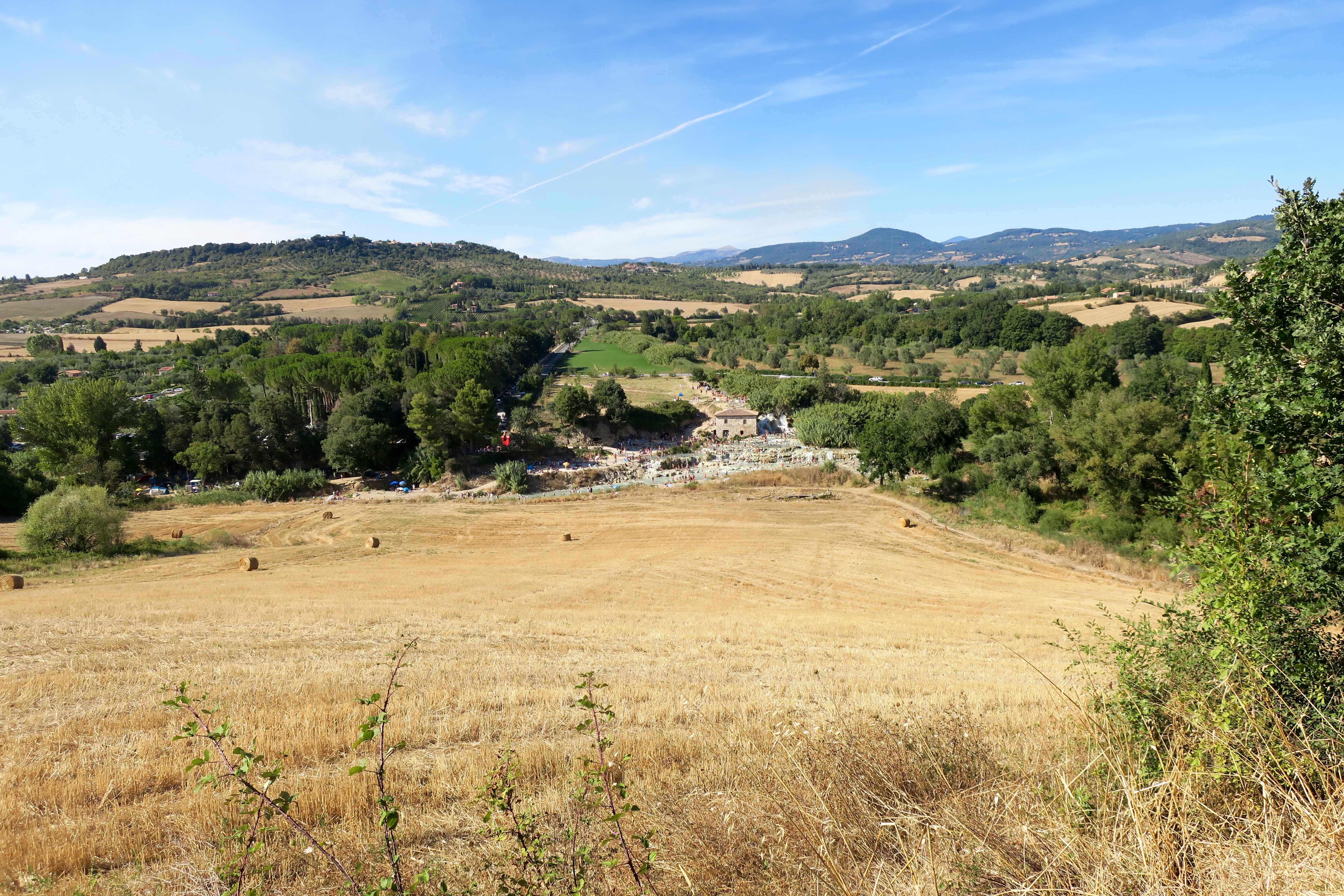
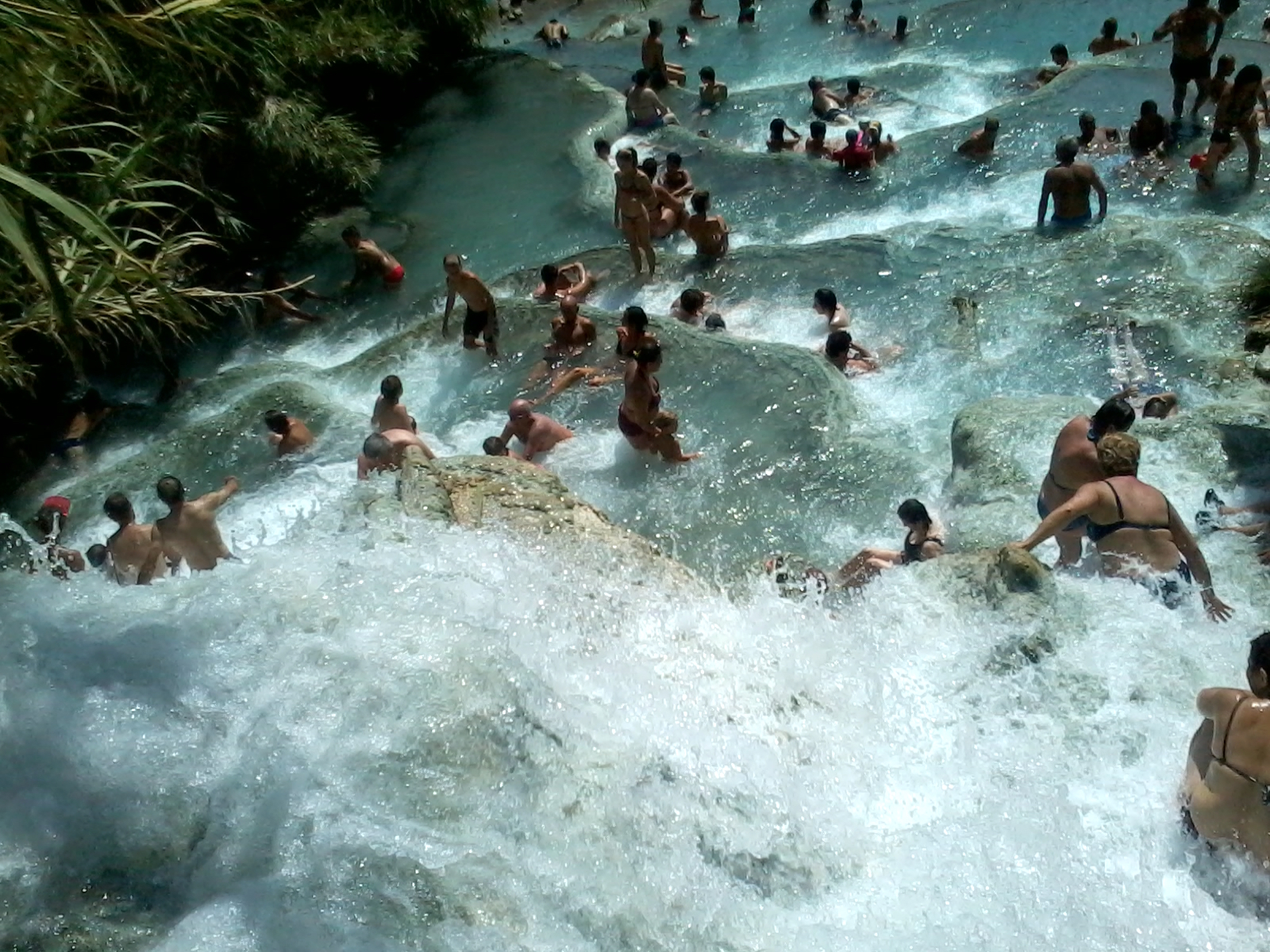
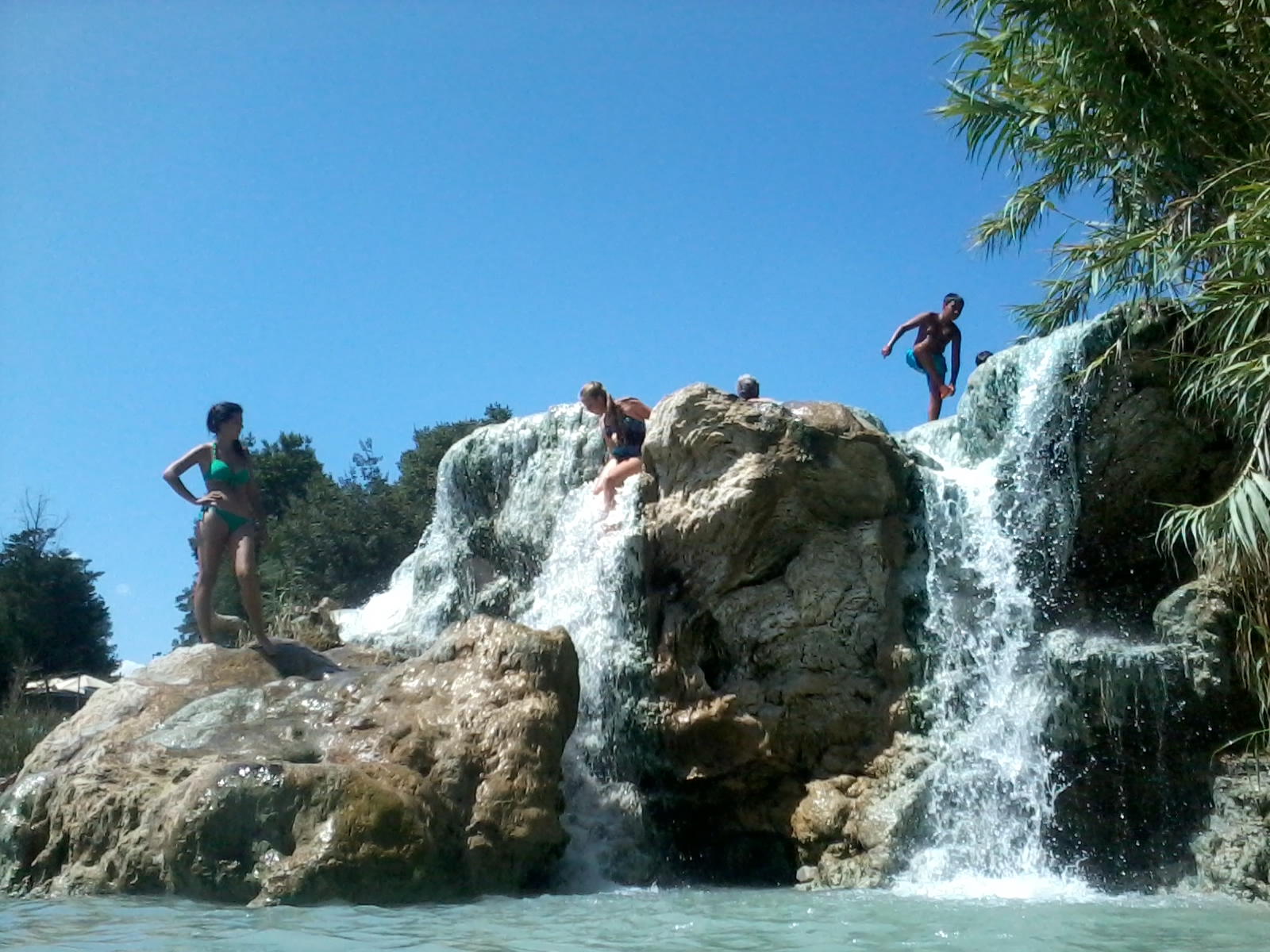
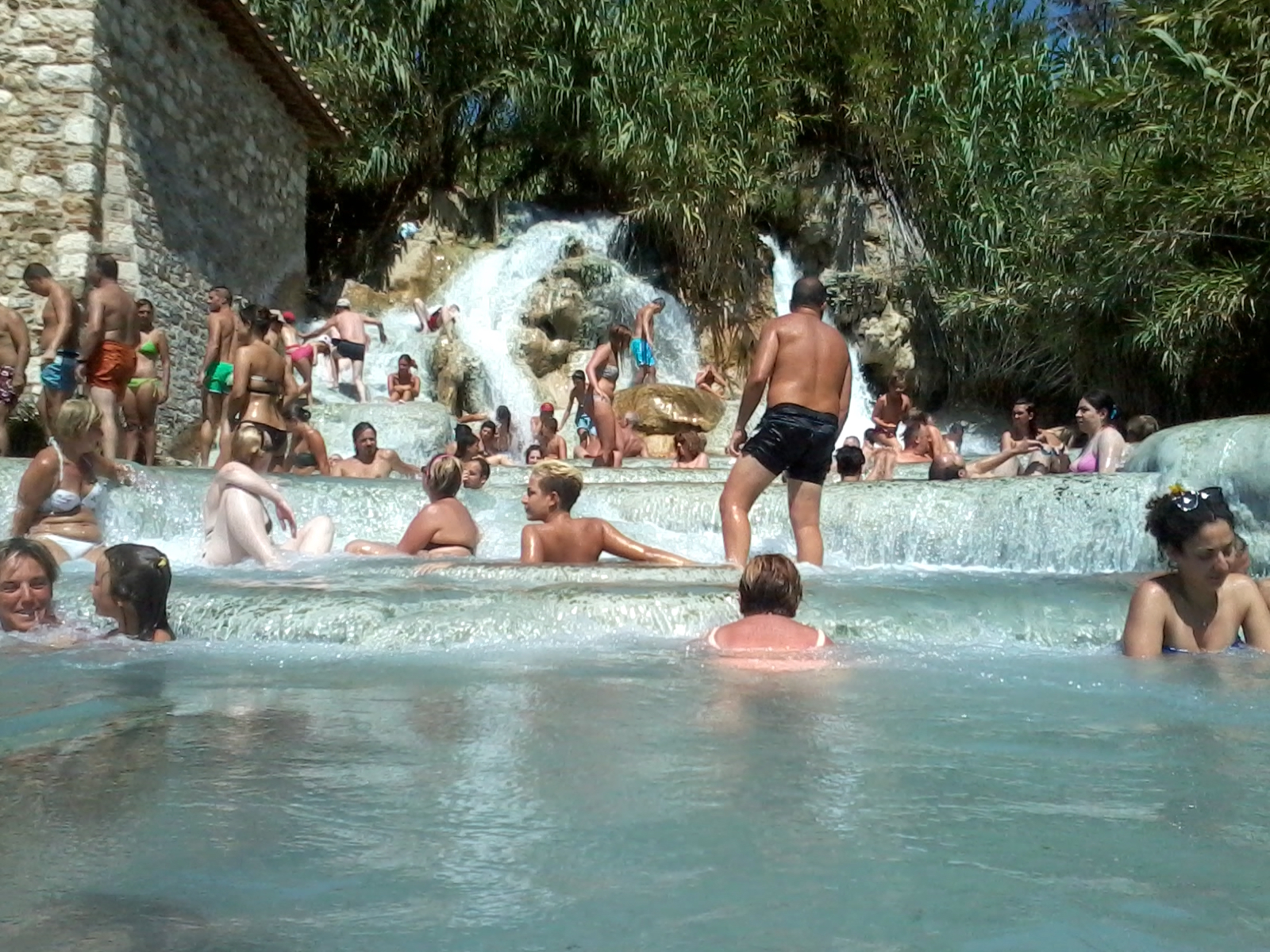
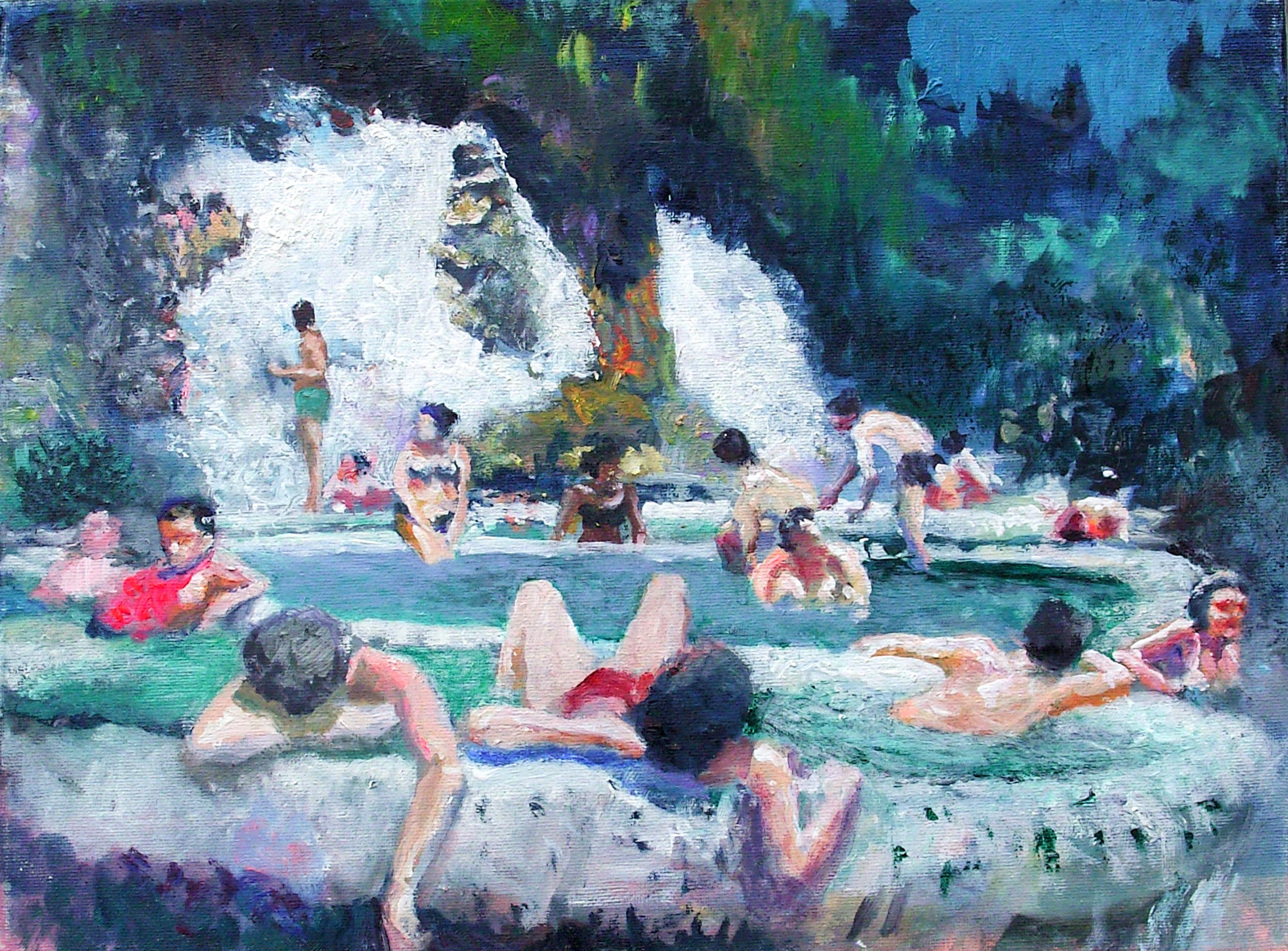
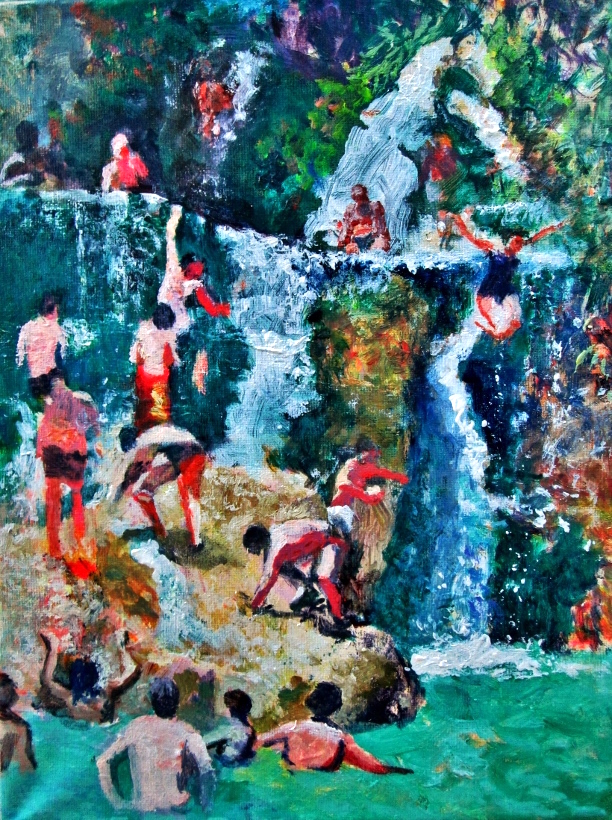
Thank you for the back story to Will Smith’s Saturnia paintings. How interesting to see his translation of that landscape, and the bright red that doesn’t show on the photographs but came through in your telling of the hot water and the cheery social scene! It looks so like Sonoma County, where I live…no wonder the Italians came here and stayed to make more wine and good times in Northern California.
Will’s painting of Saturnia Pool is hot! I think it was a little cooler when we were there, but still beautiful. If Sonoma County is like this you must be in paradise!
Chris, I love the series of photos you took from the top of the hill, putting the falls into the whole landscape. I wasn’t intrepid enough to go up there! Also interesting to see it at a different time of day. We were there late in the afternoon after visiting the 1552 Parco dei Mostri (monster park) not far away.
Thanks Will. We pulled off the road into a lay-by to take those photos. Not really very intrepid!